The Best Toothbrush & Toothpaste for Gum Disease
Explore the top toothpaste and toothbrush options along with tips to help manage and prevent gum disease effectively.
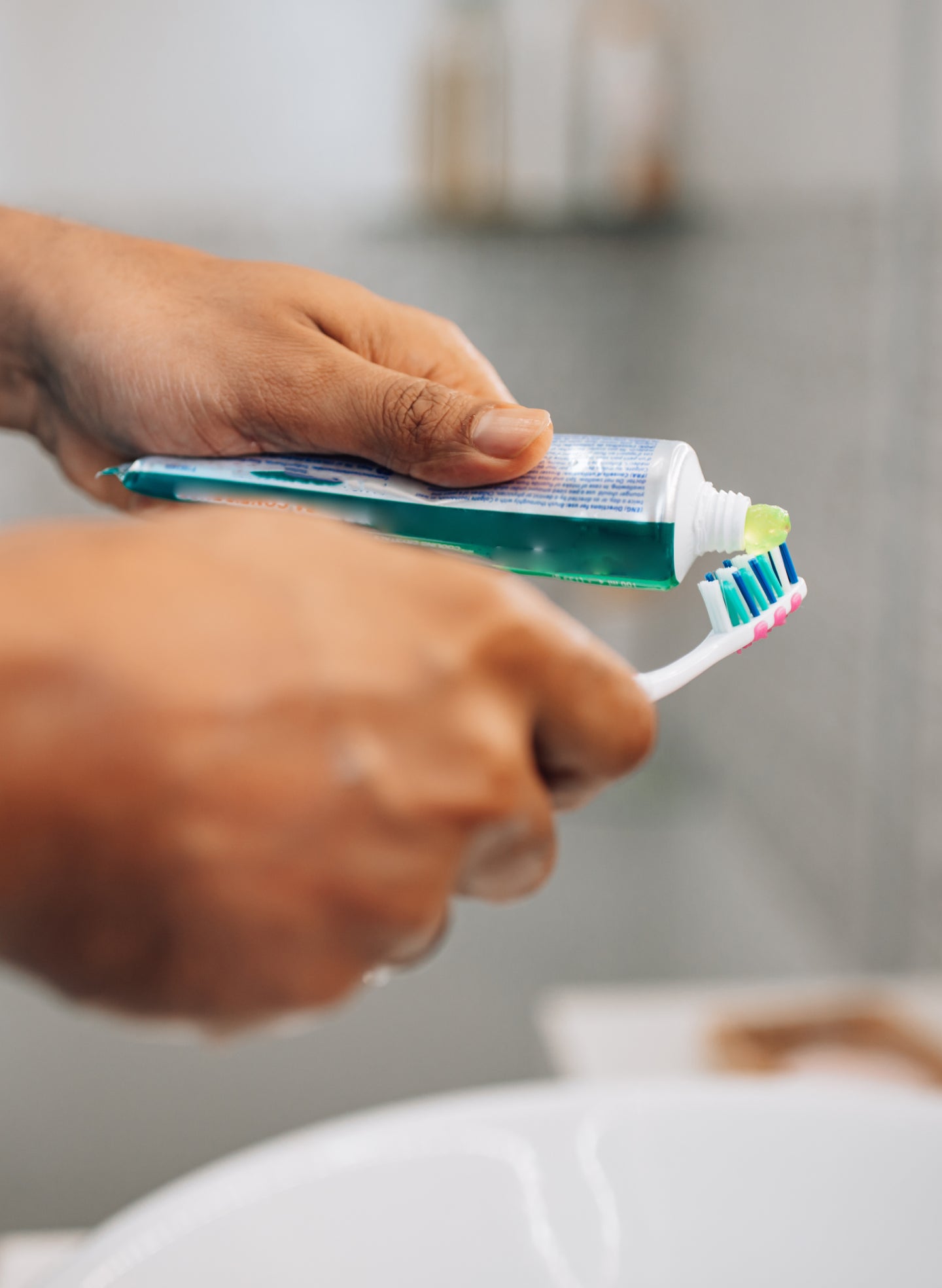
Maintaining good oral health is crucial, especially when you’re dealing with gum disease. Also known as periodontal disease, gum disease is an infection of the tissues that support your teeth.
However, a strong oral hygiene routine can promote healthy teeth and gums. Here’s everything you need to know about choosing the best toothbrush and toothpaste to lessen the risk of gum disease. With the right tools and techniques, you can make a significant difference in treating gum disease.
Why Gum Health Matters
You can think of the gums as the frontline of defense for your oral health. Gum health has a profound impact on your overall well-being.
Healthy gums help secure your teeth and reduce the risk of tooth loss. The gums also serve as a barrier, safeguarding your bloodstream from bacterial infections. There's also a significant connection between gum disease and heart health, because bacteria contribute to arterial plaque build-up.
Risk factors for gum disease include smoking, hormonal changes, and genetics, but the primary cause is poor oral hygiene. This allows plaque to build up on your teeth and gumline. Gum disease can even lead to gum recession if left untreated.
The Stages of Gum Disease
Gum disease advances through four stages, each with their own set of symptoms and treatment needs.
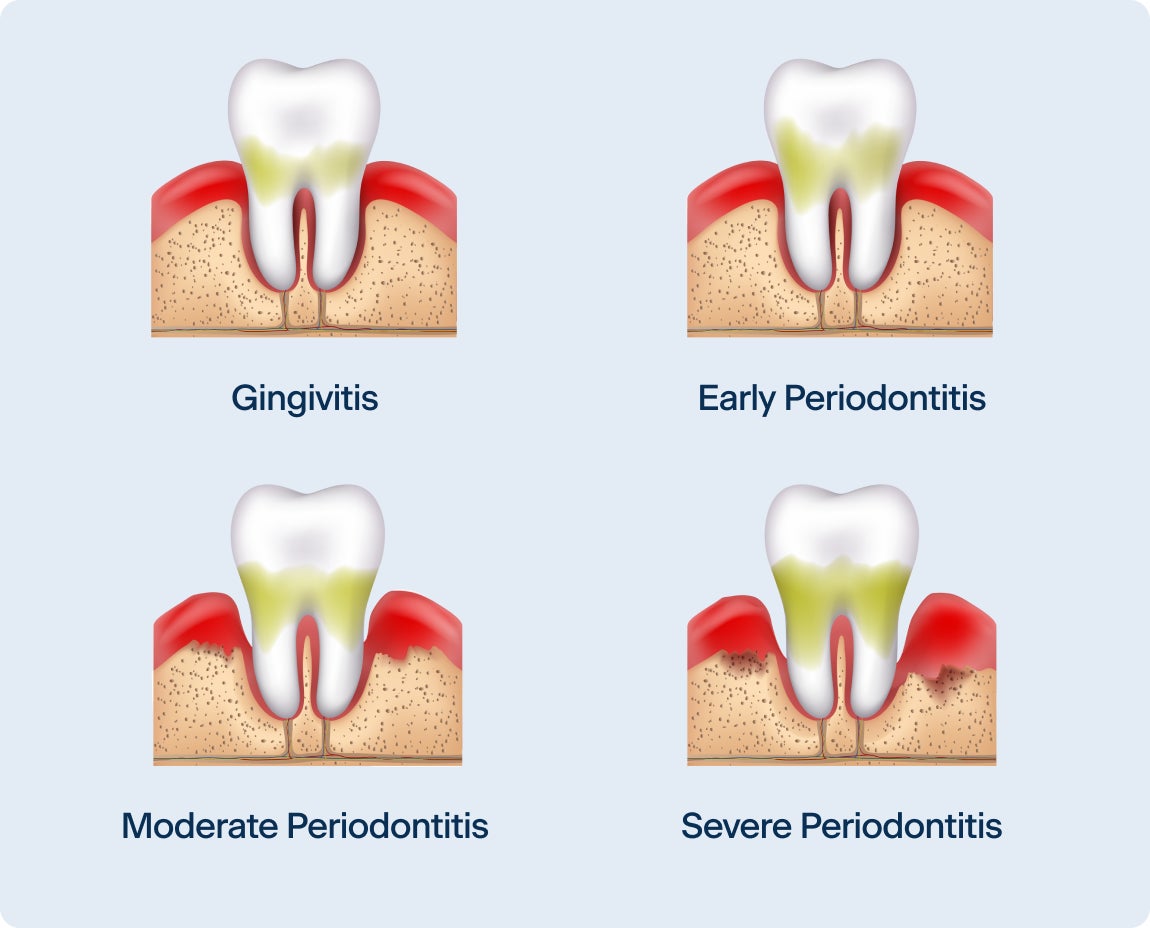
Gingivitis
This is the earliest and least severe stage of gum disease. Common indicators include red, swollen, or tender gums that may bleed during brushing or flossing, accompanied by bad breath. Fortunately, gingivitis is reversible with diligent oral hygiene and regular dental visits.
Mild Periodontitis
Without treatment, gingivitis can advance to mild periodontitis. Symptoms at this stage include gums receding from the teeth and the development of periodontal pockets.
Moderate Periodontitis
As the disease progresses further, more bone around the teeth is lost, and gums may become increasingly sore and tender.
Severe Periodontitis
In its most advanced stage, gum disease can result in teeth loosening or even falling out. Other symptoms include pus and infection along the gum line, persistent bad breath, and painful abscesses. Severe periodontitis typically necessitates periodontal surgery.
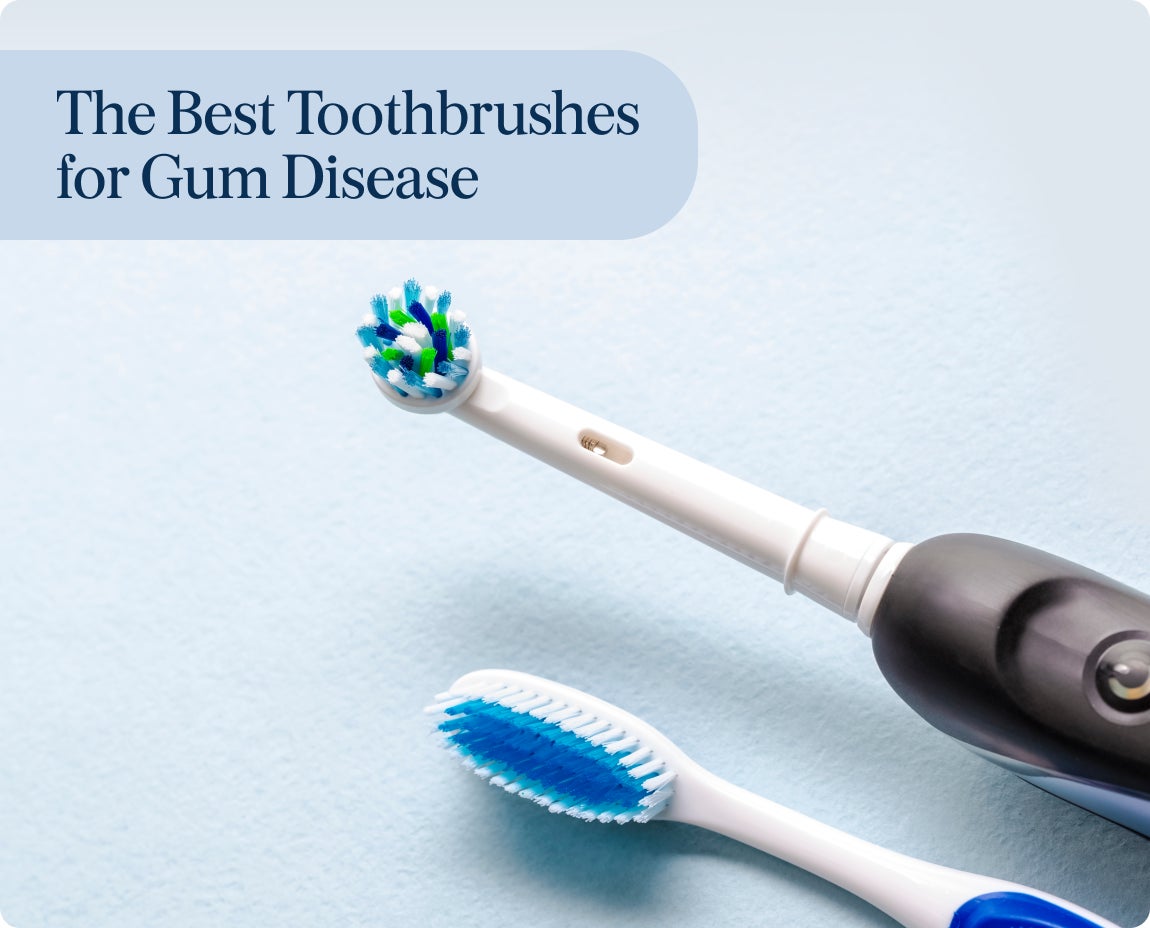
The Best Toothbrushes for Gum Disease
You can keep your gums healthy by brushing twice daily with the right toothbrush and technique.
Manual vs. Electric Toothbrushes
While manual toothbrushes can be useful, we recommend choosing an electric toothbrush.
Electric toothbrushes are more effective at removing plaque, the leading cause of gum disease. According to findings published in the Journal of Clinical Periodontology, the use of electric toothbrushes was associated with a 22% reduction in gum recession and an 18% decrease in tooth decay over an 11-year period.
Features to Look for in a Toothbrush
A soft-bristle toothbrush is an essential tool against gum disease. Soft bristles are gentle on sensitive gums and help avoid further irritation. Remember to replace your toothbrush every three months or when the bristles become frayed to make sure you’re getting a thorough cleaning.
For this reason, an electric toothbrush with a replaceable brush head can be more convenient over time. An angled brush head can help you access every corner of your mouth and help clean your gumline.
It's important to note that overbrushing with too much pressure can lead to damaging your gums and tooth enamel. You can opt for an electric toothbrush model with a pressure sensor to avoid overbrushing.
When you're searching for the right brush, popular brands like Oral-B and Sonicare are known for their gum care-focused brushes.
Toothbrushing Technique
Whether you choose an electric or manual toothbrush, technique is crucial.
Position the Brush Correctly: Hold your toothbrush at a 45-degree angle to your gums. This angle helps remove plaque and debris effectively at the gum line.
Make Gentle, Circular Motions: Brush your teeth using gentle, circular motions. Avoid harsh scrubbing, which can lead to gum irritation and enamel wear.
Cover All Surfaces: Ensure you brush the outer, inner, and chewing surfaces of all your teeth. Pay special attention to the back molars, as they are often neglected.
Brush for Two Minutes: You should take at least two minutes to brush your teeth. Consider dividing your mouth into four sections and spend 30 seconds on each.
Don't Forget Your Tongue: Bacteria can accumulate on your tongue, contributing to bad breath. Gently brush your tongue or use a tongue scraper for a fresher mouth.
Rinse and Store Properly: When you're done brushing, thoroughly rinse your brush and store it upright to air dry. Avoid covering the brush head, as this can trap moisture and harbor bacteria.
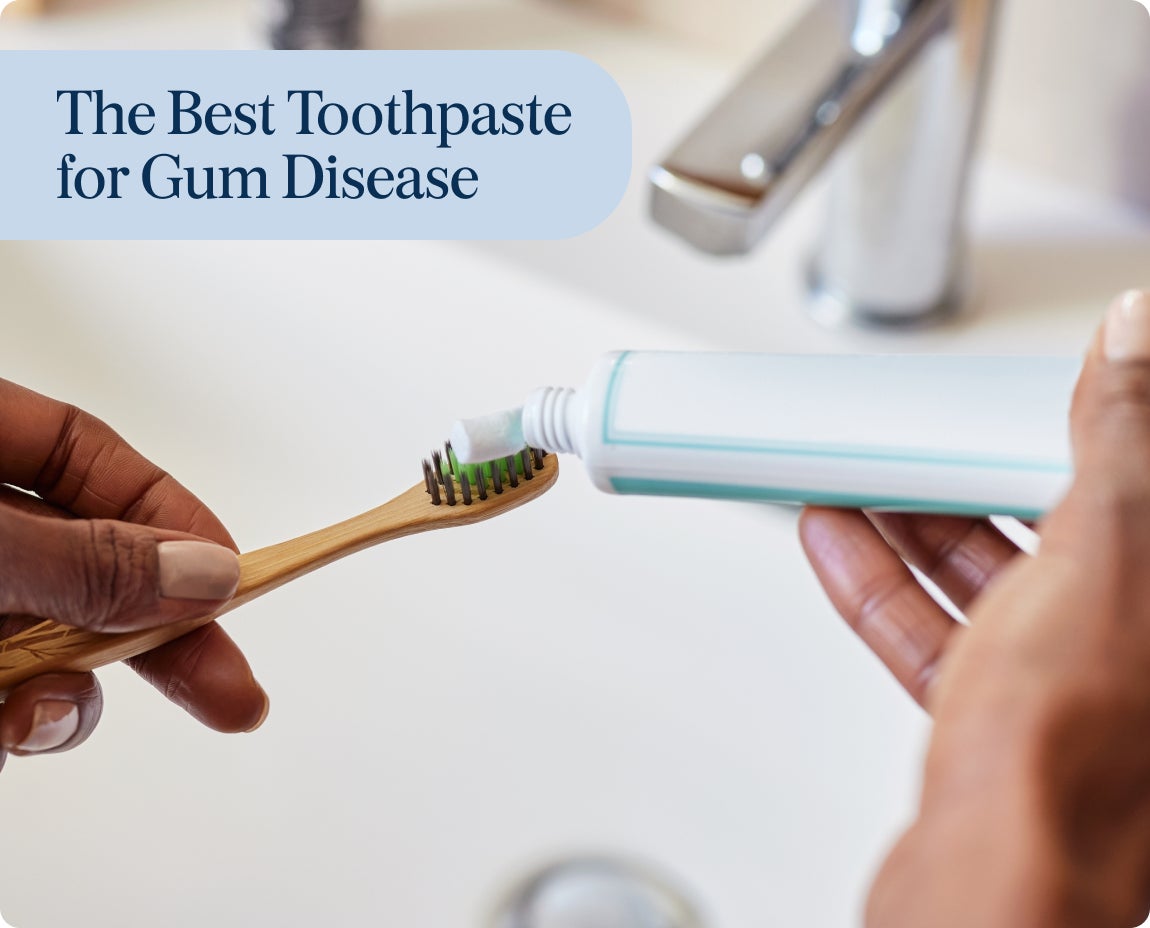
The Best Toothpaste for Gum Disease
Choosing the right toothpaste involves looking for specific ingredients known to combat gum disease and promote gum protection.
Ingredients to Look For :
Stannous Fluoride: This ingredient fights gingivitis by removing plaque, killing bacteria, and reducing inflammation.
Hydroxyapatite: It strengthens and remineralizes enamel, protecting against plaque buildup.
Vitamin C: Vital for keeping the connective tissues in your gums healthy and aiding in recovery.
Soothing Ingredients
Glycine and Hyaluronic Acid: These ingredients help restore gums, soothe inflammation, and reduce swelling.
Recommended Toothpastes
Parodontax Clean Mint: Contains stannous fluoride for fighting plaque and bacteria.
Crest Gum Detoxify: Features activated foam and stannous fluoride to target bacteria below the gumline.
Sensodyne Sensitivity & Gum: Combines stannous fluoride and potassium nitrate for dual-action relief.
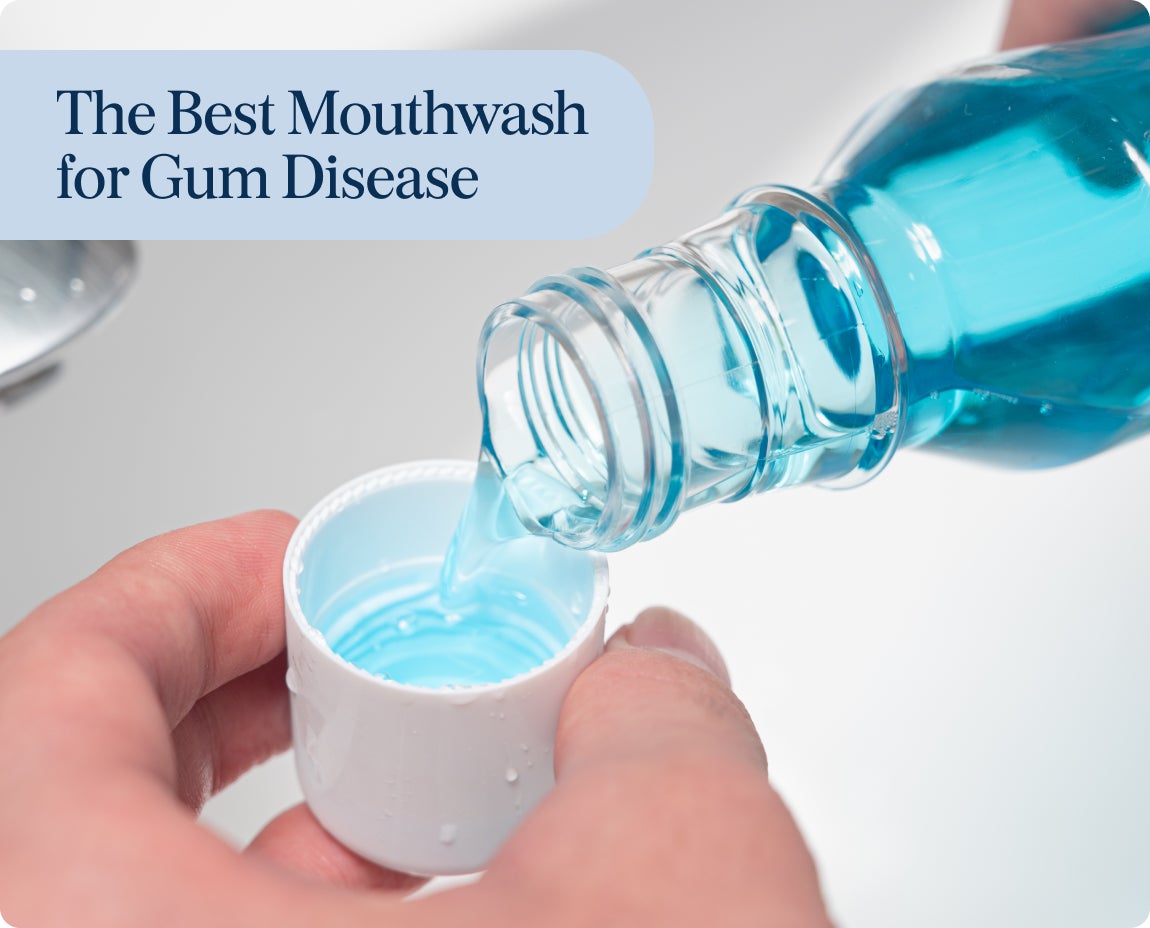
The Best Mouthwash for Gum Disease
Using an effective mouthwash is also important for treating gum disease. The best mouthwash for gum disease is Chlorhexidine (eg. Peridex), which has to be prescribed by your dentist. It is the most effective mouthwash because it kills the bacteria that are causing gum disease.
Over the counter mouthwashes may also be helpful. Look for mouthwashes with the following ingredients:
Stannous Fluoride: Kills bacteria and reduces gingivitis.
Cetylpyridinium Chloride: Prevents bacteria growth.
Hydrogen Peroxide and Zinc: Both are effective in killing bacteria and reducing plaque.
It’s important to seek professional help when you notice signs of gum disease. No mouthwash will cure gum disease by itself.

How to Maximize the Effectiveness of Toothpaste and Toothbrush
Maintaining a disciplined oral care routine and making healthy lifestyle choices significantly contribute to managing gum disease. Here are some best practices for caring for gum disease.
Daily Routine
Brushing: Brush your teeth for two minutes, twice a day, using a 45-degree angle and circular motion. Be sure to brush along the gumline. Refer back to the “Toothbrushing Technique” section of this blog for a proper primer on technique.
Flossing: Flossing is recommended by your dental provider to prevent bleeding gums. Use a gentle up-and-down motion along the gumline to remove plaque and food particles. There may be some mild gum bleeding as you floss.
Mouthwash: Incorporate an antibacterial mouthwash into your daily regimen to reduce bacteria.
Healthy Lifestyle Choices
Regular Dental Exams and Cleanings: Schedule regular visits to your dental provider for professional cleanings and exams.
Quitting Tobacco and Limiting Sugar Intake: Tobacco and sugar can exacerbate gum disease, so it’s essential to cut back.
Diet: Include fruits and vegetables rich in vitamin C to support gum health.
Schedule a Free Consultation
If you have gum disease, you don’t have to struggle alone. Schedule a free consultation at ClearChoice to learn your options from a team that’s dedicated to your smile’s success.
Frequently Asked Questions
What type of toothbrush is best for gum disease?
A toothbrush with soft bristles is generally best for people with gum disease. Electric toothbrushes, particularly those with pressure sensors, help prevent further damage to gums.
How often should I replace my toothbrush if I have gum disease?
Replace your toothbrush every three months or when the bristles become frayed.
Can an electric toothbrush help with gum disease?
Yes, electric toothbrushes are more effective in reducing plaque and gingivitis, which are critical factors in gum disease management.
What toothpaste is best for gum disease?
Toothpastes containing fluoride and antibacterial ingredients like stannous fluoride are excellent for treating gum disease. Parodontax and Corsodyl are good examples.
Is alcohol-free mouthwash better for gum disease?
Yes, alcohol-free mouthwash is gentler on sore gums and helps prevent further irritation.
Can using the right toothpaste help reverse gum disease?
Yes, toothpaste with the right ingredients can help reduce plaque, gingivitis, and support healthy gums.
What daily habits help manage gum disease?
Brushing and flossing twice daily, using antibacterial mouthwash, and maintaining a healthy diet each help manage gum disease
Why is stannous fluoride important in toothpaste and mouthwash for gum disease?
Stannous fluoride kills bacteria, reduces plaque, and helps lessen the risk of gingivitis.
How can I reverse gum disease at home?
You can help reverse early gum disease (gingivitis) with consistent oral hygiene. This includes brushing twice a day, using therapeutic toothpaste, and flossing.
